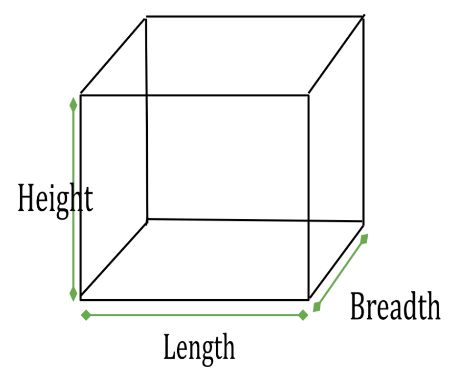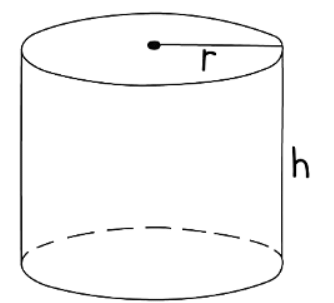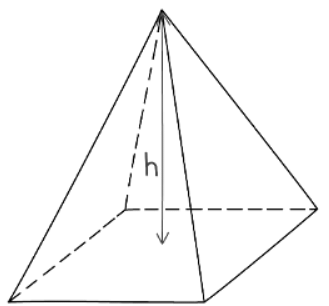Class 10 Exam > Class 10 Notes > Mathematics for GCSE/IGCSE > Volume
Volume | Mathematics for GCSE/IGCSE - Class 10 PDF Download
| Table of contents |

|
| What is volume? |

|
| How do I find the volume of cuboids, prisms, and cylinders? |

|
| How do I find the volume of pyramids, cones, & spheres? |

|
| Problem Solving with Volumes |

|
What is volume?
- The volume of a three-dimensional shape indicates the amount of space it occupies.
- It's important to know how to compute the volumes of several common three-dimensional shapes.
How do I find the volume of cuboids, prisms, and cylinders?
- To find the volume of a cuboid, use the formula Volume of a cuboid = length × width × height.

- You will sometimes see the terms 'depth' or 'breadth' instead of 'height' or 'width'.
- A cuboid is, in fact, another name for a rectangular-based prism.
Volume Calculation for Prisms
- Formula for Volume: To determine the volume of a prism, you can use the formula where
- Volume of a prism = area of cross-section × length = Al

- Varied Cross-Sections: A prism's cross-section can take any shape. If you know its area and length, you can calculate the volume of the prism.
- Reverse Calculation: Alternatively, if you're aware of the volume and length of the prism, you can determine the cross-section's area.
Volume of a Cylinder
- To find the volume of a cylinder with radius (r) and height (h), apply the formula: Volume of a cylinder = πr2h

- It's important to note that a cylinder essentially behaves like a circular-based prism, where its cross-section is a circle with an area of πr2 and a length of h.
How do I find the volume of pyramids, cones, & spheres?
- To calculate the volume of a pyramid with a height (h), utilize the formula: Volume of a pyramid = 1/3 × area of base × h =


- It's crucial to understand that for this formula, the height must be a line from the apex of the pyramid that is perpendicular to the base.
Volume of a Cone
- Volume of a Cone: To find the volume of a cone with base radius 'r' and height 'h', use the formula Volume of a cone =


- Cone Structure: Note that a cone is essentially a circular-based pyramid. Like in pyramids, the height in the cone volume formula should be a line from the apex perpendicular to the base.
Volume of a Sphere
- Volume of a Sphere: Calculate the volume of a sphere with radius 'r' using the formula Volume of a sphere =

Problem Solving with Volumes
How can I solve problems when its not a "standard" 3D shape?
- Non-standard shapes in problems often deviate from typical forms like cubes, cones, or spheres.
- They typically fall into two categories:
- A prism, which is a 3D shape with a consistent cross-section throughout its length.
- A portion or fraction of a standard shape, such as a hemisphere.
- If the shape is a prism:
- Remember that the volume of a prism equals the cross-sectional area multiplied by its length.
- The cross-sectional area might be a complex shape like an L-shape or a combination of a rectangle and a triangle.
- If the shape is a fraction of a standard shape:
- Consider the complete version of the shape and then calculate the appropriate fraction of it.
- For example, a hemisphere is half of a sphere, and a frustum is a truncated cone or pyramid.
- The volume of a frustum is found by subtracting the volume of the smaller shape from the volume of the larger shape.
The document Volume | Mathematics for GCSE/IGCSE - Class 10 is a part of the Class 10 Course Mathematics for GCSE/IGCSE.
All you need of Class 10 at this link: Class 10
|
66 videos|674 docs|19 tests
|
FAQs on Volume - Mathematics for GCSE/IGCSE - Class 10
| 1. How is the volume of a cuboid calculated? |  |
Ans. The volume of a cuboid is calculated by multiplying the length, width, and height of the shape together, using the formula Volume = length x width x height.
| 2. What is the formula for finding the volume of a prism? |  |
Ans. The formula for finding the volume of a prism is the same as that of a cuboid - Volume = base area x height. The base area is calculated based on the shape of the base of the prism.
| 3. How can the volume of a cylinder be determined? |  |
Ans. The volume of a cylinder can be determined by multiplying the area of the base (which is a circle) by the height of the cylinder, using the formula Volume = πr^2h, where r is the radius of the base and h is the height of the cylinder.
| 4. What is the formula for finding the volume of a pyramid? |  |
Ans. The formula for finding the volume of a pyramid is Volume = (1/3) x base area x height. The base area is determined based on the shape of the base of the pyramid.
| 5. How can the volume of a cone be calculated? |  |
Ans. The volume of a cone can be calculated by multiplying the area of the base (a circle) by the height of the cone and dividing the result by 3, using the formula Volume = (1/3) x πr^2h, where r is the radius of the base and h is the height of the cone.
Related Searches















